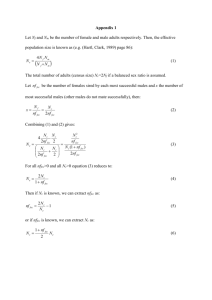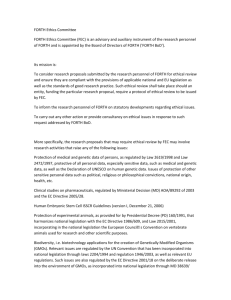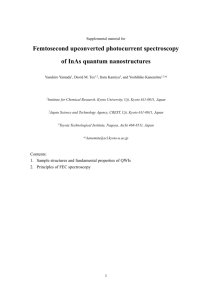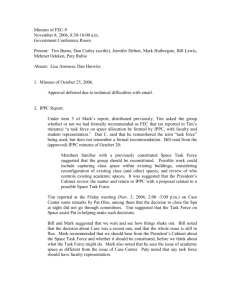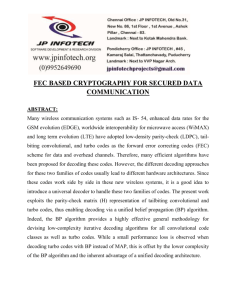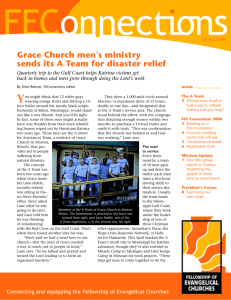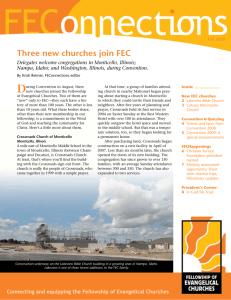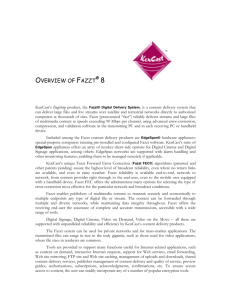RESEARCH SUPPORT OFFICE
advertisement
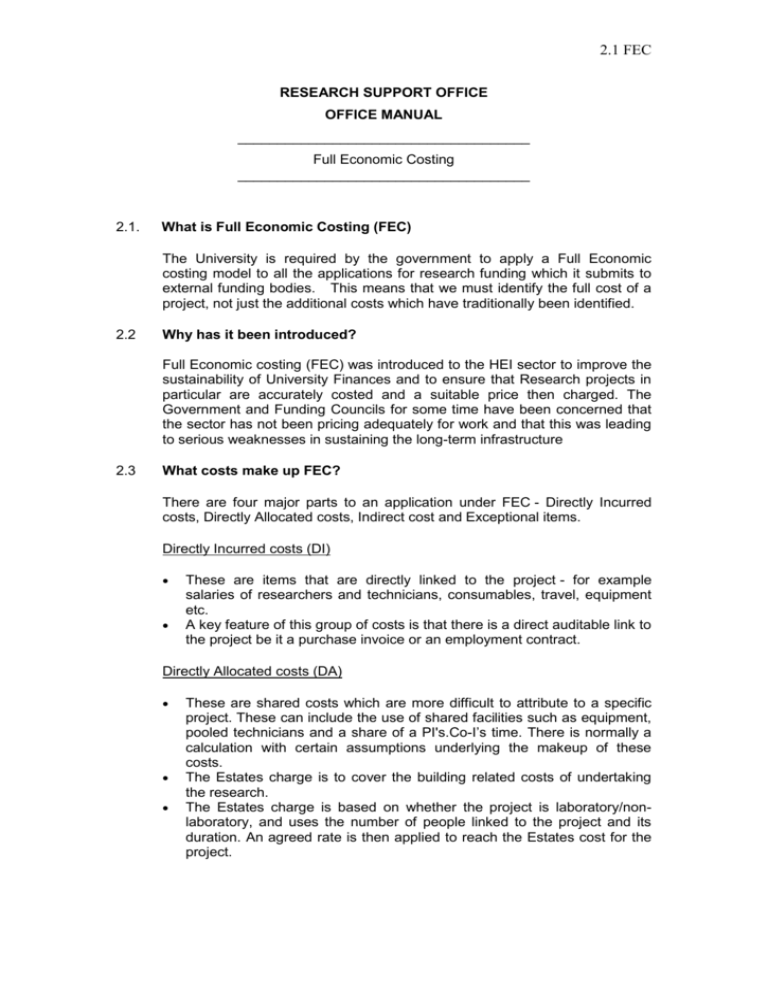
2.1 FEC RESEARCH SUPPORT OFFICE OFFICE MANUAL _____________________________________ Full Economic Costing _____________________________________ 2.1. What is Full Economic Costing (FEC) The University is required by the government to apply a Full Economic costing model to all the applications for research funding which it submits to external funding bodies. This means that we must identify the full cost of a project, not just the additional costs which have traditionally been identified. 2.2 Why has it been introduced? Full Economic costing (FEC) was introduced to the HEI sector to improve the sustainability of University Finances and to ensure that Research projects in particular are accurately costed and a suitable price then charged. The Government and Funding Councils for some time have been concerned that the sector has not been pricing adequately for work and that this was leading to serious weaknesses in sustaining the long-term infrastructure 2.3 What costs make up FEC? There are four major parts to an application under FEC - Directly Incurred costs, Directly Allocated costs, Indirect cost and Exceptional items. Directly Incurred costs (DI) These are items that are directly linked to the project - for example salaries of researchers and technicians, consumables, travel, equipment etc. A key feature of this group of costs is that there is a direct auditable link to the project be it a purchase invoice or an employment contract. Directly Allocated costs (DA) These are shared costs which are more difficult to attribute to a specific project. These can include the use of shared facilities such as equipment, pooled technicians and a share of a PI's.Co-I’s time. There is normally a calculation with certain assumptions underlying the makeup of these costs. The Estates charge is to cover the building related costs of undertaking the research. The Estates charge is based on whether the project is laboratory/nonlaboratory, and uses the number of people linked to the project and its duration. An agreed rate is then applied to reach the Estates cost for the project. 2.1 FEC Indirect costs This is a single figure charged to the application and is calculated in a similar way to the Estates charge above. The indirect cost is designed to provide a contribution towards the costs of all other central overheads. Exceptional Items These are items for which full FEC is paid - such as postgraduate tuition and fees. The balance of equipment costs above £50k should be met in full. Summing these four categories should provide the Full Economic Cost of undertaking the project. The J-eS on-line application forms closely mirror this approach and their summary sheet illustrates the build up of costs and what percentage will be funded. It is University policy that all externally funded research and service projects will be COSTED on a FEC basis, except for travel grants, equipment grants, and studentships. Both the Estates and Indirect cost rate is calculated by the Capital and Cost team within the Finance directorate. 2.4 How does FEC affect Research Council funding? Instead of paying the direct costs of research projects plus a contribution towards indirect costs (calculated on the basis of 46% of the additional staff costs), as it was the case pre 1 September 2005, the Research Councils now pay 80% of the FFEC of research project, with the University supplying the remaining 20%. Fellowships will be included, attracting indirect costs on the same basis as other projects. The Councils will pay 100% of Exceptional items – these include research students in total, and ESRC surveys and equipment over £50,000 (first £50,000 will be paid at 80% - whether one or several pieces of equipment – and the excess at 100%). 2.5 Do charities and other sponsors meet FEC? Applications for funding from charities will also be costed on an FEC basis. Charities will meet the directly incurred costs of the project. It is unlikely that they will meet the FEC of research projects. Government departments (except R&D office, Invest NI) are expected to meet 100% of FEC. Industry and Commercial are expected to at least meet 100% of FEC. Other HEIs – should be paying FEC. European Union (EU) requires different costing models. The Additional Cost method was applied to Framework 6 projects and within Framework 7 the Special Transition Flat Rate method is applied. 2.1 FEC The main changes to the costing of Research Projects as a result of fEC are that : Principal and Co-Investigator costs should be included A charge for Estates and a charge for Indirect costs, based on relevant FTEs, will replace the charge previously included for overheads Investigator costs will be estimated when proposals are prepared. In addition to providing information on other staff costs and direct costs, Principal Investigators will include estimates of the time that they, and co-investigators, will spend working on the project. Investigator (academic) and research staff time on the project contribute to the calculation of the direct estates costs and indirect costs. 2.6 Cost versus price! It is important to recognise that the application of FEC allows us to calculate the full COST to the University of undertaking the research. This is distinct from the PRICE that is charged for the research. Price may be determined by the funding arrangements of the research sponsor, or by negotiation, as in the case of industry sponsors. The price paid will depend on the funder. A charity will tend to pay for the Directly Incurred (DI) costs, and a Research Council will pay (approximately) 80% of the total cost. Pricing for commercial organisations is more complicated, and there will be instances where the price could be lower or higher than the full cost, although we should be aiming for at least full cost recovery. Where applications to Industrial sponsors are made at less that FEC, then authorisation of the Head of School is required. In general, funding should not be accepted if it does not cover all of the directly incurred costs. Exceptions will usually relate to prestigious funding schemes for which the funder expects the University to co-invest in the project (eg Leverhulme Fellowships or the AHRC research leave).
